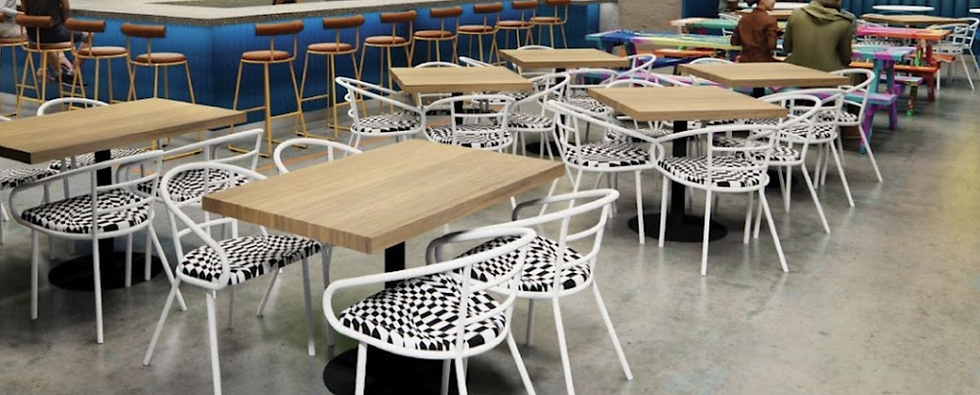Digital Transformation in Design: Unlocking the Power of Smart Buildings and the Metaverse
- Nicole Lashae Ben

- Feb 19
- 3 min read
Updated: May 16
In today’s ever-evolving world, the intersection of design, technology, and workplace management is opening new frontiers in both creativity and efficiency. Erin McDaniel, CEO of Lighting Environments and its sister company, Environments, shared insights on this topic in a recent episode of Thrive in Design. Her perspective offers key lessons on how companies can leverage technology to elevate their physical spaces and better understand human behavior in the workplace. Here are a few key takeaways:
1. The Creativity in Software Development
McDaniel’s journey into technology began with a natural curiosity that led her to write software—a process she describes as one of the most creative outlets she has ever encountered. Much like designing a physical space, software development allows for endless customization, storytelling, and unique expression. By blending technical expertise with a creative mindset, businesses can create custom solutions that align with their vision.
2. Digital Twins and the Metaverse in Design
One of the core innovations McDaniel’s company has pioneered is the use of digital twins—three-dimensional digital representations of physical spaces. Digital twins can be used for everything from energy management to workplace optimization, feeding real-time data into the system to generate insights that would be impossible to gather with traditional methods. Once avatars are added, the digital twin evolves into a metaverse—a virtual space where users can interact in a connected environment. This technology enables businesses to simulate real-world conditions and drive decisions that optimize space utilization, employee collaboration, and even brand experience.
3. Understanding Human Behavior Through Data
Smart buildings equipped with sensors and IoT devices provide a treasure trove of data that companies can use to understand how their spaces are being utilized. McDaniel's team visualizes this data in 3D heat maps, offering deeper insights into patterns such as occupancy, movement, and even temperature preferences. For instance, when her office saw a 60% occupancy rate but 100% space usage, the data helped her make smarter decisions on real estate investment. Understanding these dynamics is crucial for designing spaces that foster productivity and wellbeing.
4. The ROI of Smart Buildings
The value of smart buildings extends beyond energy savings—it’s about using human behavior data to optimize every aspect of real estate. Whether it's encouraging the use of underutilized spaces or fostering collaboration in hybrid work environments, the return on investment (ROI) can be substantial. Smart buildings are no longer a luxury but an essential tool for businesses looking to maximize efficiency and employee engagement in the post-COVID era.
5. Leveraging IoT and the Elevated Environments App
At the core of McDaniel's vision is IoT (Internet of Things) integration, which connects various devices—thermostats, cameras, lights, and sensors—into one seamless platform. This led to the development of the Elevated Environments app, a system that deciphers data to provide real-time insights, create digital twins, and even establish metaverse workplaces. This app allows companies to bridge the gap between their physical and digital environments, enhancing both operational efficiency and the user experience.

Explore Further:
Want to dive deeper into how the metaverse and smart buildings can transform your workplace? Listen to Episode 2 of Season 4 of Thrive In Design for more insights from Erin McDaniel on the future of design and technology.
🎧 Listen now on your favorite platform:
Let us know your biggest takeaway from the episode in the comments!







Comments